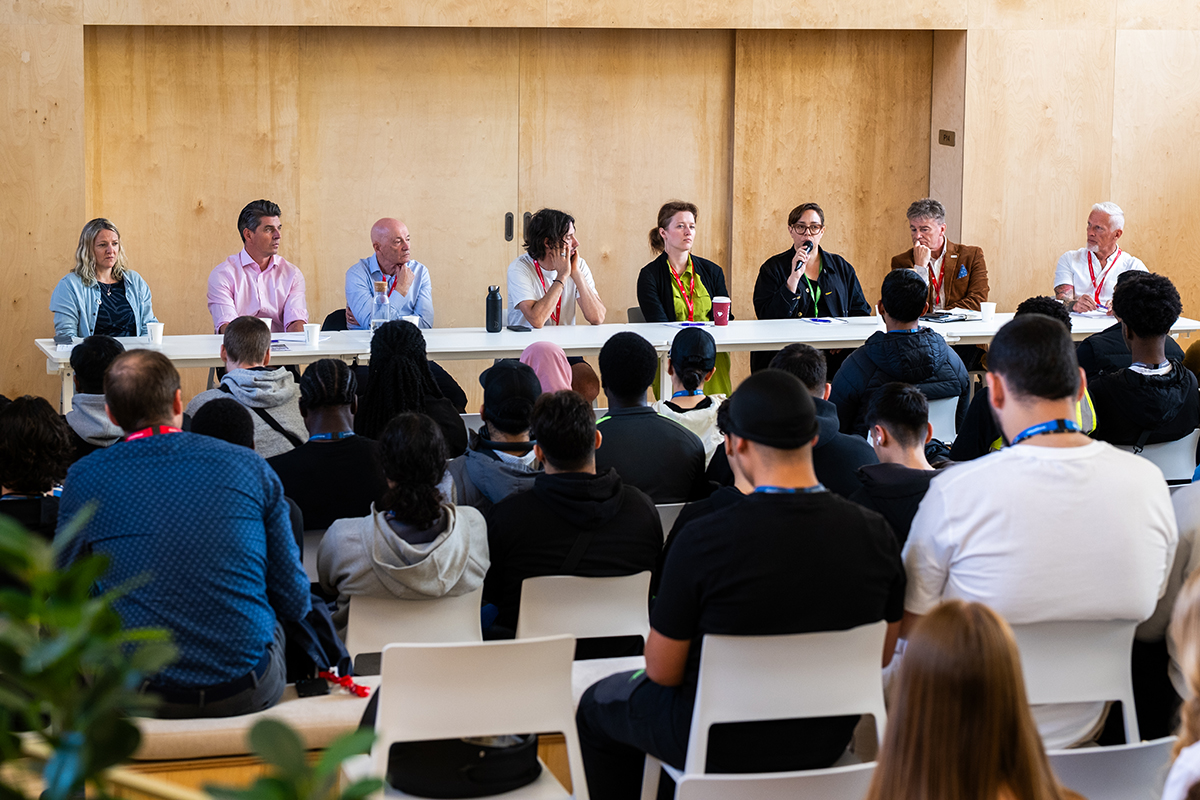From Shared Challenges to Collective Action: Why Community Matters in Digital Sustainability

The digital world is built on networks and connectivity, and that’s exactly how we should be tackling its environmental impacts: together.
Last year, I wrote an article for FE News on the urgent need to make digital sustainability in education more than just a “nice to have.” That piece focused on the environmental impact of our digital infrastructure, from procurement and energy use to cloud storage and e-waste, and outlined practical steps colleges could take to start making a difference.
But one of the most common responses I heard after publishing the piece was:
“We want to take action, but we don’t know where to start.”
That sentiment stuck with me. Not just because it was honest, but because it echoed what I’d already heard during dozens of conversations with Jisc members across further education. Whether I was talking to sustainability leads, IT managers, or curriculum teams, the message was consistent: “we care about this, but we feel like we’re figuring it out in a vacuum.”
In fact, that sense of uncertainty and fragmentation became one of the recurrent themes in Jisc’s 2024 digital sustainability in tertiary education report, which explores the UK sector’s biggest digital sustainability challenges.
Two specific issues came up time and again throughout the report:
- A lack of clear starting points
- A lack of spaces to share, collaborate, and learn from others
The Solution? Community.
Effective Change Cannot Happen in Silos
Digital sustainability is complex. It cuts across many aspects of how colleges operate, including how hardware is purchased and used, the management of cloud platforms and how staff and students engage with AI. These touch points are so far-reaching that they are often not owned by a single department, and do not sit neatly under a single job title.
That complexity is part of what makes institutional digital sustainability so hard to identify, measure and progress in isolation. Even the most committed sustainability lead or tech specialist will struggle to make progress alone. And without a coordinated effort, we run the risk of needlessly duplicating work, missing important insights, and generally wasting time continuously trying to reinvent the wheel.
But collaboration isn’t just a practical fix. It’s also a cultural shift, one that turns sustainability from a box-ticking exercise into a shared responsibility across institutions with real purpose and insight.
What We’ve Learned by Learning Together
In response to the opportunities identified in our report, last year we launched the FE and skills digital sustainability community.
So far, we’ve hosted sessions on a range of digital sustainability topics such as:
- Embedding green skills into digital curricula
- Decluttering institutional cloud storage
- Understanding the environmental impact of AI use
- Managing e-waste responsibly
- Greener procurement and device lifecycle management
- Raising awareness of digital carbon footprints
And we’re just getting started.
Some talks are led by external experts. Others are peer-led, drawing from work already happening in colleges across the UK. But, often, the most valuable part of the sessions is the discussion afterwards where people ask honest questions, share lessons learned, or say, “we tried this, but it didn’t quite work.”
These conversations are essential. They create a culture where it’s safe to admit uncertainty and where learning from each other becomes the norm. It also reminds us that progress isn’t always linear or perfect, but it is, importantly, more likely when shared.
Cross-Pollination: The Power of Connecting Between Communities
At Jisc we’ve also worked to join the dots between other fantastic initiatives across the sector, like the UCISA sustainability group, SOS-UK (Students Organising for Sustainability), and #SUSTAINFE. Each of these valuable communities brings something different to the table, and it’s through this kind of cross-pollination that ideas really begin to take root and scale.
The aim isn’t to centralise or standardise everything, it’s to build bridges. To help people see that they’re part of a much wider movement, one that spans institutions, regions, and roles. The more we connect these dots, the faster and more effectively we can act.
Communities help us scale action, not just awareness
Digital sustainability isn’t just a technical problem focussed on things like energy usage and device procurement. It’s also about cultural shifts and raising awareness. It highlights how we share, how we support one another, and how we create momentum that outlives individual projects or roles.
Too often, sustainability work gets left to the enthusiasm of one or two staff members. It lives in a single team, or it’s squeezed into the corner of an already full agenda. But when those individuals are part of a wider network, they’re no longer shouting into the void, they’re part of something that grows, adapts, and reinforces itself.
That’s how momentum builds. And that’s how real change happens, not in silos, but in sync.
What’s Next: Growing Our Collective Capacity
Anyone working in FE will know that the challenges ahead are…well, challenging to say the least! Generative AI is changing how we teach and learn. The need for increased digital infrastructure has expanded. Budgets are shrinking. And climate targets loom closer every year.
But we’re not starting from scratch. We already have the knowledge, creativity, and passion within the sector. What we need now is more connection, more spaces to share, ask, challenge, and co-create.
Final Thoughts
Digital sustainability can feel overwhelming, especially when it’s framed as a purely technical or institutional challenge. But when we look at it through the lens of connection and community, it becomes something much more hopeful.
Because in the end, the systems we’re trying to change, the servers, platforms, devices, and tools, all rely on networks to function.
And so do we.
By Cal Innes, digital sustainability subject specialist at Jisc










Responses